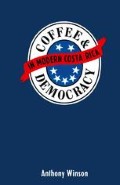Abstract
After 1950 or so as part of the new development model envisioned by Costa Rica’s political leadership, the State became a powerful social force in creating the preconditions for the modernisation of the economy. This was nowhere more true than with the nation’s coffee sector. And the State’s ability to make coffee the motor of economic development would not only determine the resources that could be put into a needed diversification of the country’s economic structure, it would also inevitably impinge on the longer-term success or failure of a programme of welfare capitalism and the liberal democratic political structures that were just being given shape in the early 1950s.
The development of a country is a slow process, much like the growth of a tree … And, as things are like this, it is necessary to plant trees, and undertake long term projects, and to have patience. (J. Figueres, Cartas a un Cuidadano, 1956)
Access this chapter
Tax calculation will be finalised at checkout
Purchases are for personal use only
Preview
Unable to display preview. Download preview PDF.
Notes
Oficina del Café, Plan de Abonamiento Intensivo (San José, 1959), p.7 and Programa para la Rehabilitatión de Cafetales (San José, 1954), p.6.
Details on the legal minimum hourly wages that prevailed is found in Justo Aguilar F., Carlos Barboza V. and Jorge Leon S. Desarrollo Tecnologico del Cultivo del Café (Consejo Nacional de Investigaciones Cientificas y Tecnologicas, San José, 1981), p.3–39, Table 3–10. They also provide figures indicating that the actual wages paid did not vary too much from the legal minimum, during these years, though by the 1970s actual wages lagged somewhat behind the legal minimum.
In 1950 local agricultural experts had noted that despite the rise in wages, coffee workers were able to cover substantially less of their necessities with their salaries than in the mid 1930s. See A.T. Blanco and J. Morales, ‘Los Salarios en Café no Cobren el 38 por ciento de las Necesidades de los Trabajadores’, (Instituto Interamericano de Ciencias Agricolas, San José, 1950).
The former are recounted in Manuel Rojas Bolanos, ‘Clase y Lucha de Clases en Costa Rica: 1940–48’ unpublished Ph.D. thesis (Universidad Nacional Autonoma de Mexico, 1977), pp.148–49. The latter is detailed in Delgado, El Partido, part II.
Banco Anglo Costarricense, Programa para la Rehabilitatión de Cafetales, (San José, 1954), p.6.
See Banco Central, ‘Reduce Impuesto de Importacion de Abonos Arancel de Aduanas, Ley no. 1738 de 31 de Marzo de 1954’, Memoria Anual (San José, 1959), pp.319–20.
William Hayden Q., Relatión Entre el Credito Ortogado al Café y la Expansion en su Productión, Banco Central, series no. 5 (San José 1970), p.19.
Calculated from data found in Oficina del Café, Informe Sobre la Politica de Credito a la Actividad Cafetalera Durante 1979, Appendix A (San José, 1979), Table 1.
This is discussed in Banco Central, Politica Crediticia en Relatión con la Actividad Cafetalera, (San José, 1972), p.5 and passim.
This is noted, for example in Banco Central, Programa National de Credito para Abonamiento de Cafetales (San José, 1976), p.3. The impression that part of such credits would be destined to such ends was also supported by interviews with personnel in the Ministry of Agriculture and Livestock (April 1980) and by the study carried out by Aguilar et al., ‘Desarrollo Tecnologico’, pp.6/46.
These remarks are based on interviews with personnel of CICAFE, and the Oficina del Café’s Informe Sobre la Actividad Cafetalera de Costa Rica (San José, 1979).
See, for example, Oficina del Café, Informe de Labores, 1976, (San José, 1977), p.48.
See José Cazanga S. ‘Las Cooperativas de Caficultores de Costa Rica en el Proceso de Desarrollo del Capitalismo en el Café’ thesis for the Licenciatura (Universidad de Costa Rica, 1982), p.147.
See Rafael Cartay A., ‘La Comercialización de Café en Costa Rica a traves de Co-operativos’, Masters of Science thesis (Instituto Interamericana de Ciencias Agricolas, 1969), p.54.
D. Zuniga, ‘El Café: Su Imperativa Economica, Politica y Social en Costa Rica’, thesis for the Licenciatura (Universidad de Costa Rica, 1971), p.88
This is reported in Oficina del Café, Informe Sobre la Actividad Cafetalera de Costa Rica (San José, 1976), p.9, table 1.
For example, C.A. Krug and R.A. de Poerck, authors of the World Coffee Survey, (FAO, Rome, 1968), p.226 remark that ‘Costa Rica is an outstanding example of the effect of improved technology on production.’ See also the article ‘Costa Rica tiene una de los mas Avanzadas Tecnologicias para Producir Café’ La Prensa Libre (8 February 1975).
Author information
Authors and Affiliations
Copyright information
© 1989 Anthony Winson
About this chapter
Cite this chapter
Winson, A. (1989). Coffee and the Costa Rican Model of Development. In: Coffee and Democracy in Modern Costa Rica. Palgrave Macmillan, London. https://doi.org/10.1007/978-1-349-10424-6_6
Download citation
DOI: https://doi.org/10.1007/978-1-349-10424-6_6
Publisher Name: Palgrave Macmillan, London
Print ISBN: 978-1-349-10426-0
Online ISBN: 978-1-349-10424-6
eBook Packages: Palgrave Political & Intern. Studies CollectionPolitical Science and International Studies (R0)

